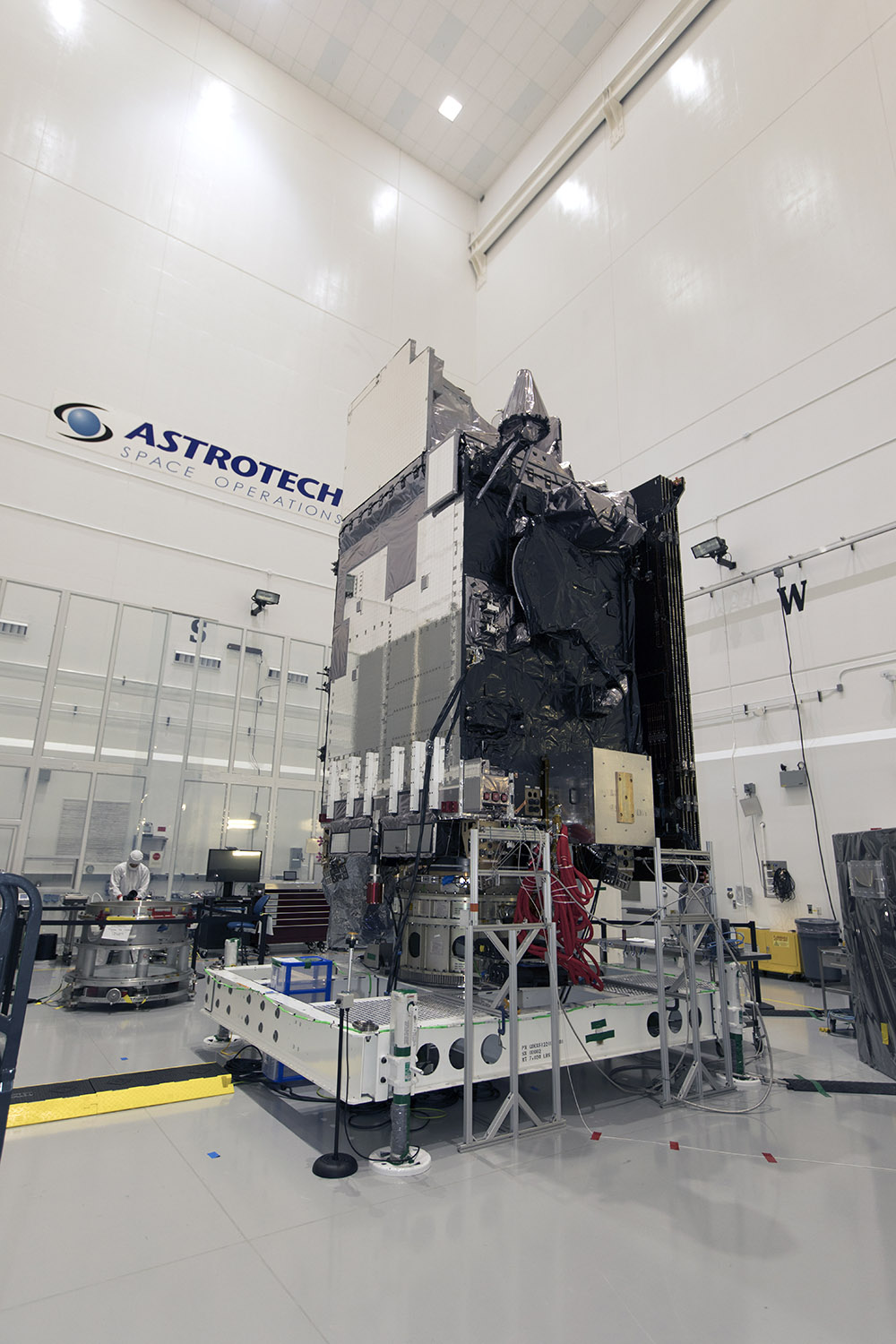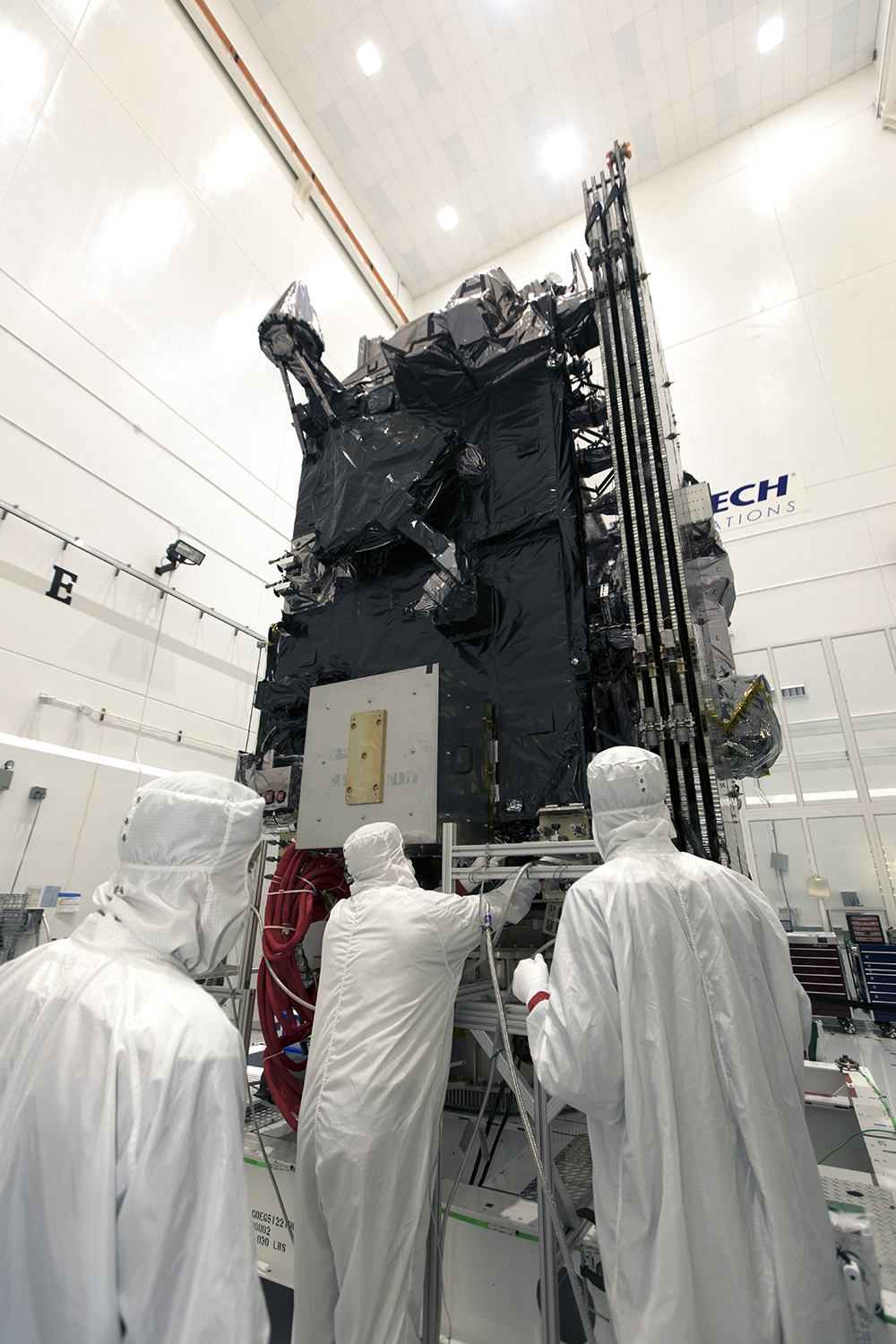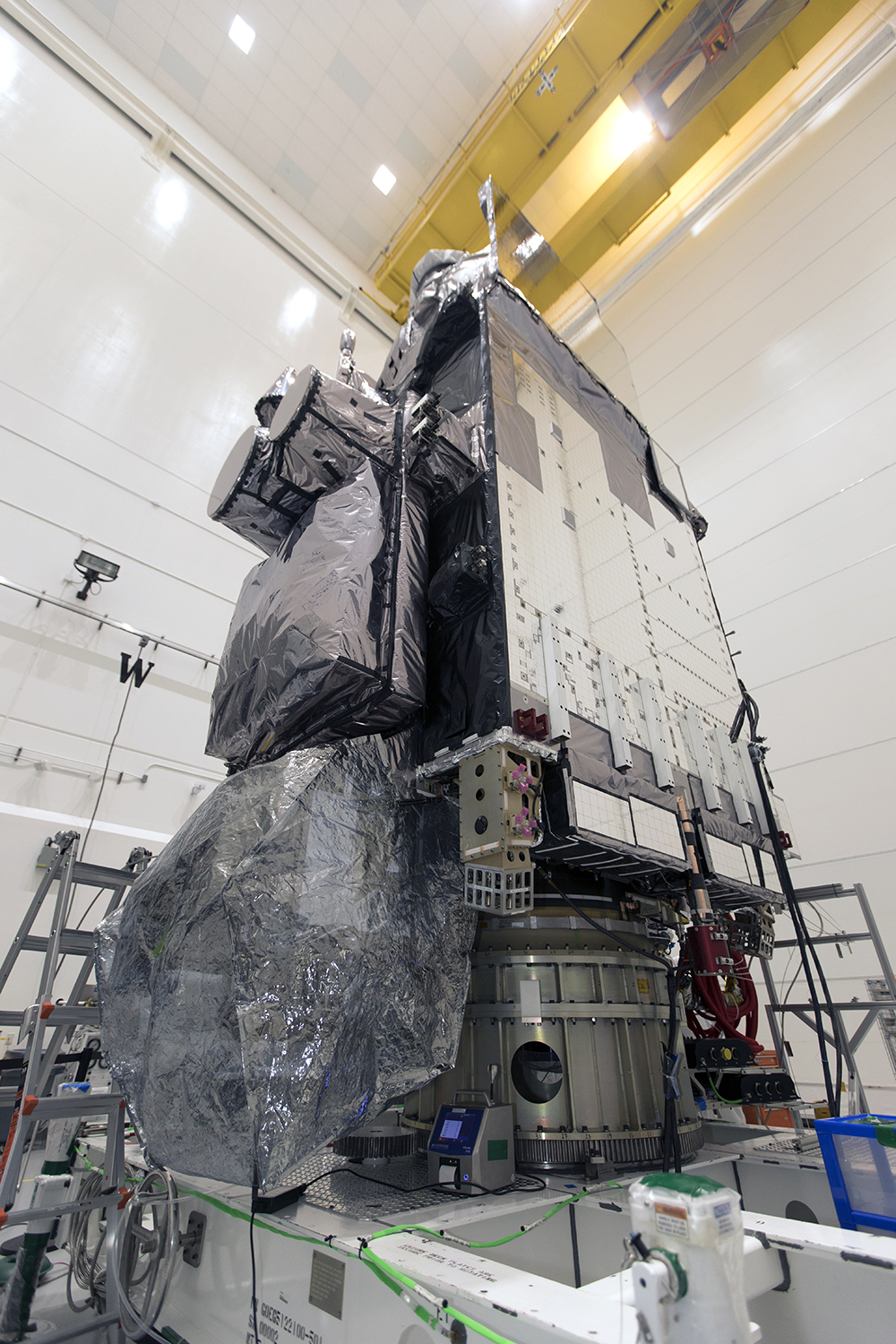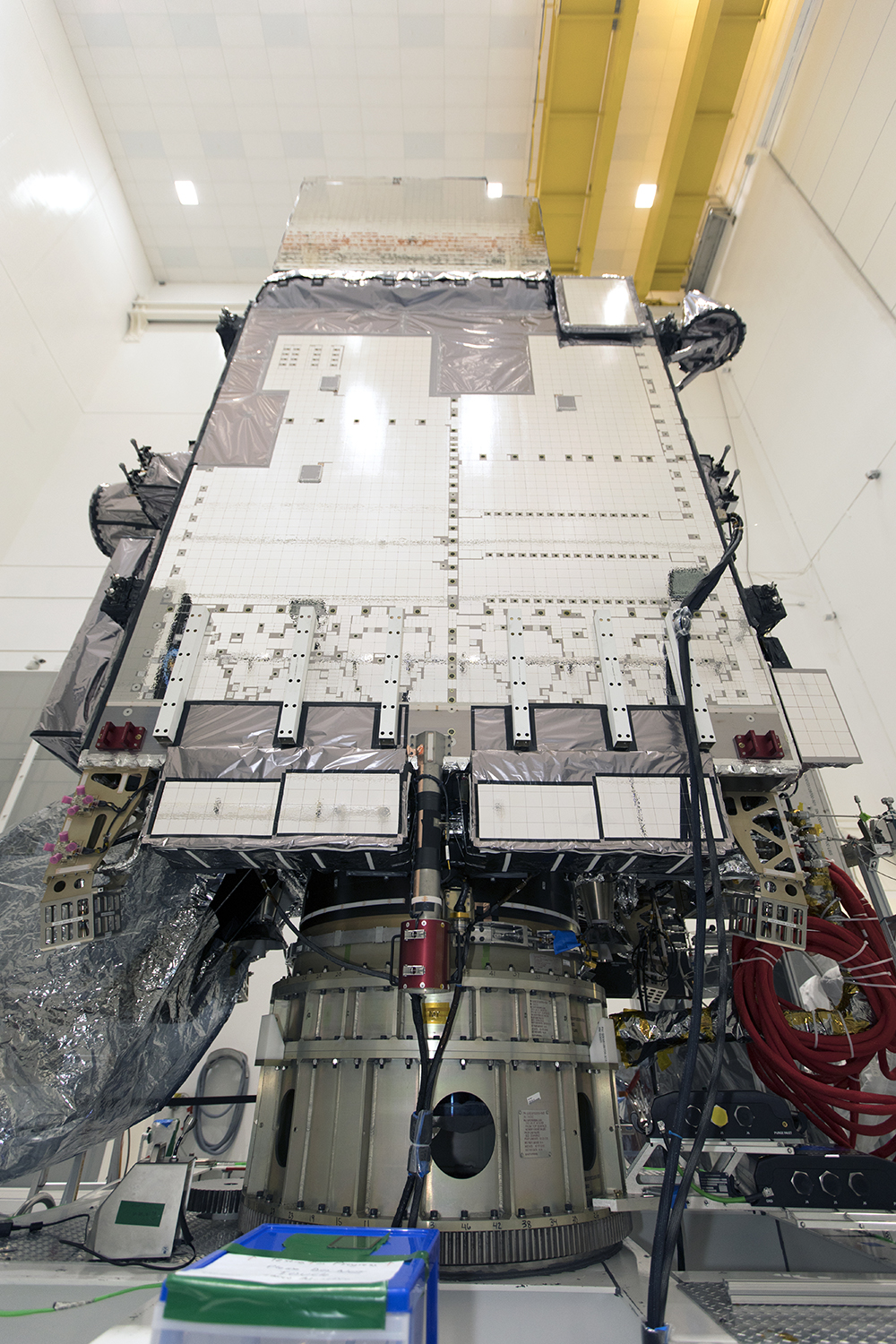NOAA Goes-S Satellite Update: Media Day in Florida
Special Stories
22 Jan 2018 8:58 AM
Last week, Florida-based media got an up-close look at NOAA's GOES-S, the second in a series of highly advanced geostationary weather satellites. Currently, the satellite is inside a secured clean room at Astrotech Space Operations in Titusville.
 GOES-S Pre-Encapsulation inside Astrotech Space Operations facility in Titusville Florida.
GOES-S is scheduled to launch March 1, 2018, from Cape Canaveral, Fla., and will be known as GOES-17 when it reaches final orbit. After an orbital test phase of its six instruments and their data, GOES-17 will be declared operational as the new GOES West satellite.
GOES-S Pre-Encapsulation inside Astrotech Space Operations facility in Titusville Florida.
GOES-S is scheduled to launch March 1, 2018, from Cape Canaveral, Fla., and will be known as GOES-17 when it reaches final orbit. After an orbital test phase of its six instruments and their data, GOES-17 will be declared operational as the new GOES West satellite.
 GOES-S will provide coverage of the U.S. West Coast, Alaska, Hawaii, Mexico, Central America, parts of South America and the Pacific Ocean extending to New Zealand.
GOES-S will provide coverage of the U.S. West Coast, Alaska, Hawaii, Mexico, Central America, parts of South America and the Pacific Ocean extending to New Zealand.
 GOES-16, the first satellite in the new series, launched on Nov. 19, 2016 and is operating in the GOES-East position.
GOES-16, the first satellite in the new series, launched on Nov. 19, 2016 and is operating in the GOES-East position.
 For WeatherNation: Meteorologist Mace Michaels
For WeatherNation: Meteorologist Mace Michaels
 GOES-S Pre-Encapsulation inside Astrotech Space Operations facility in Titusville Florida.
GOES-S is scheduled to launch March 1, 2018, from Cape Canaveral, Fla., and will be known as GOES-17 when it reaches final orbit. After an orbital test phase of its six instruments and their data, GOES-17 will be declared operational as the new GOES West satellite.
GOES-S Pre-Encapsulation inside Astrotech Space Operations facility in Titusville Florida.
GOES-S is scheduled to launch March 1, 2018, from Cape Canaveral, Fla., and will be known as GOES-17 when it reaches final orbit. After an orbital test phase of its six instruments and their data, GOES-17 will be declared operational as the new GOES West satellite.
 GOES-S will provide coverage of the U.S. West Coast, Alaska, Hawaii, Mexico, Central America, parts of South America and the Pacific Ocean extending to New Zealand.
GOES-S will provide coverage of the U.S. West Coast, Alaska, Hawaii, Mexico, Central America, parts of South America and the Pacific Ocean extending to New Zealand.
 GOES-16, the first satellite in the new series, launched on Nov. 19, 2016 and is operating in the GOES-East position.
GOES-16, the first satellite in the new series, launched on Nov. 19, 2016 and is operating in the GOES-East position.
 For WeatherNation: Meteorologist Mace Michaels
For WeatherNation: Meteorologist Mace MichaelsAll Weather News
More